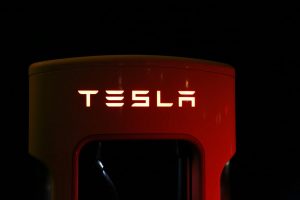
Electric Vehicles: Latest Innovations and Trends
Electric vehicles (EVs) are no longer just a futuristic concept; they are a significant part of the present and future of transportation. With the rapid advancements in technology, growing environmental concerns, and strong governmental support, EVs are becoming increasingly mainstream. This article explores the latest innovations and trends in the electric vehicle industry, highlighting how these advancements are shaping the future of mobility.

The Evolution of Electric Vehicles
Electric vehicles have come a long way since their inception in the late 19th century. The early models were overshadowed by internal combustion engine vehicles due to their limited range and high costs. However, the resurgence of interest in EVs in the late 20th and early 21st centuries, driven by technological advancements and environmental awareness, has led to a remarkable transformation in the industry.
Key Innovations in Electric Vehicles
- Battery Technology:
- Solid-State Batteries: One of the most promising advancements is the development of solid-state batteries. These batteries offer higher energy density, faster charging times, and improved safety compared to traditional lithium-ion batteries. Companies like Toyota and QuantumScape are at the forefront of this technology.
- Battery Swapping: To address the issue of long charging times, some companies are exploring battery swapping technology. This involves exchanging a depleted battery with a fully charged one in a matter of minutes. Nio, a Chinese EV manufacturer, has implemented this technology in its vehicles.
- Autonomous Driving:
- Self-Driving Technology: Autonomous driving is becoming a critical feature in modern EVs. Tesla’s Full Self-Driving (FSD) and General Motors’ Super Cruise are examples of advanced driver-assistance systems (ADAS) that offer varying levels of autonomy. These technologies promise to enhance safety and convenience for drivers.
- Vehicle-to-Everything (V2X) Communication: V2X communication allows vehicles to communicate with each other and with infrastructure. This technology enhances traffic management, reduces accidents, and improves the efficiency of autonomous driving systems.
- Charging Infrastructure:
- Ultra-Fast Charging Stations: The development of ultra-fast charging stations is crucial for the widespread adoption of EVs. Companies like Ionity and Electrify America are deploying charging stations capable of delivering up to 350 kW, significantly reducing charging times.
- Wireless Charging: Wireless charging technology, also known as inductive charging, allows EVs to charge without physical connectors. This technology, still in its early stages, aims to provide a more convenient and user-friendly charging experience.
- Vehicle Design and Materials:
- Lightweight Materials: The use of lightweight materials such as carbon fiber and aluminum in vehicle construction helps improve energy efficiency and extend the range of EVs. Companies like BMW are incorporating these materials into their EV designs.
- Aerodynamic Design: Enhanced aerodynamics reduce drag and improve the efficiency of EVs. Manufacturers are focusing on sleek, aerodynamic designs to maximize range and performance.
- Integration with Renewable Energy:
- Solar-Powered EVs: Some manufacturers are exploring the integration of solar panels into EVs to extend their range. Companies like Aptera and Lightyear are developing vehicles with solar capabilities, allowing for partial self-charging.
- Vehicle-to-Grid (V2G) Technology: V2G technology enables EVs to feed electricity back into the grid. This not only helps stabilize the grid but also provides EV owners with potential income by selling excess energy.
Trends Shaping the Future of Electric Vehicles
- Increased Range and Affordability:
- Improved Battery Efficiency: Advances in battery technology are leading to increased range and reduced costs. The average range of EVs is steadily increasing, making them more practical for long-distance travel.
- Economies of Scale: As production scales up, the cost of EVs is expected to decrease. Government incentives and subsidies further enhance the affordability of EVs for consumers.
- Diverse Vehicle Segments:
- Electric Trucks and Buses: The electrification of commercial vehicles is gaining momentum. Companies like Rivian, Tesla, and Daimler are developing electric trucks and buses to reduce emissions in the transportation sector.
- Electric Two-Wheelers: The market for electric two-wheelers, such as scooters and motorcycles, is expanding rapidly, especially in urban areas where they offer a convenient and eco-friendly mode of transportation.
- Global Expansion:
- Market Penetration in Developing Countries: Developing countries are becoming significant markets for EVs. Improved infrastructure and government policies are driving the adoption of EVs in regions like Asia and Africa.
- International Collaboration: Cross-border collaborations between automakers, technology companies, and governments are fostering the global growth of the EV industry.
- Sustainability and Recycling:
- Eco-Friendly Manufacturing: Manufacturers are focusing on sustainable practices, from sourcing raw materials to the end-of-life recycling of batteries. Companies like Tesla are investing in battery recycling programs to minimize environmental impact.
- Second-Life Batteries: Used EV batteries are being repurposed for energy storage systems, providing a second life for batteries and reducing waste.
- Smart and Connected Vehicles:
- Internet of Things (IoT) Integration: The integration of IoT technology in EVs allows for real-time monitoring, predictive maintenance, and enhanced connectivity. Smart features like remote diagnostics and over-the-air updates are becoming standard.
- Artificial Intelligence (AI): AI is being used to optimize various aspects of EV performance, from energy management to autonomous driving capabilities. AI-driven analytics provide valuable insights into vehicle health and driver behavior.
Competitive Table of Electric Vehicles
| Manufacturer | Key Models | Battery Technology | Autonomous Features | Unique Selling Points |
| Tesla | Model S, Model 3 | Lithium-ion, 4680 cells | Full Self-Driving (FSD) | Supercharger network, OTA updates |
| Nissan | Leaf, Ariya | Lithium-ion | ProPILOT Assist | Affordable pricing, widespread availability |
| Chevrolet | Bolt EV, Bolt EUV | Lithium-ion | Super Cruise | Affordable range, extensive dealer network |
| BMW | i3, iX3, i4 | Lithium-ion | BMW Intelligent Personal Assistant | Luxury features, advanced connectivity |
| Rivian | R1T, R1S | Lithium-ion | Driver+ | Adventure-focused design, off-road capabilities |
| Lucid Motors | Air | Lithium-ion, 113 kWh | DreamDrive | Longest range, luxury interior |
| Hyundai | Kona Electric, Ioniq 5 | Lithium-ion | Highway Driving Assist | Competitive pricing, stylish design |
| Volkswagen | ID.4, ID. Buzz | Lithium-ion | IQ.DRIVE | Affordable EVs, strong brand heritage |
Analysis Table of Electric Vehicles
| Manufacturer | Strengths | Weaknesses | Opportunities | Threats |
| Tesla | Innovation leader, extensive network | High cost, production delays | Expansion in emerging markets, AI | Increased competition, regulatory scrutiny |
| Nissan | Affordability, reliability | Limited range, slower innovation | Expanding EV lineup, global presence | Market saturation, price wars |
| Chevrolet | Affordability, dealer network | Limited model options | Developing new models, leveraging brand | Competition from new entrants |
| BMW | Luxury, advanced technology | High cost, limited model range | Expanding EV portfolio, luxury market | Competition from other luxury brands |
| Rivian | Innovative design, off-road capability | High price point, production challenges | Expanding market, unique niche | Competition from established automakers |
| Lucid Motors | Long range, luxury features | High cost, limited production | Targeting luxury market, technological advancements | High competition in luxury segment |
| Hyundai | Competitive pricing, stylish design | Limited luxury options | Expanding model range, tech integration | Intense competition in affordable segment |
| Volkswagen | Strong brand, affordable options | Limited model range | Developing new models, leveraging brand | Competition from other affordable EVs |
Conclusion
The electric vehicle industry is witnessing unprecedented growth and innovation. From advancements in battery technology to the integration of AI and autonomous driving, EVs are set to revolutionize the way we travel. As manufacturers continue to push the boundaries of technology and design, the future of electric vehicles looks promising. With increasing affordability, expanded model options, and enhanced infrastructure, EVs are poised to become the dominant mode of transportation in the near future. Embracing these innovations and trends will not only drive the industry forward but also contribute to a more sustainable and eco-friendly world.










